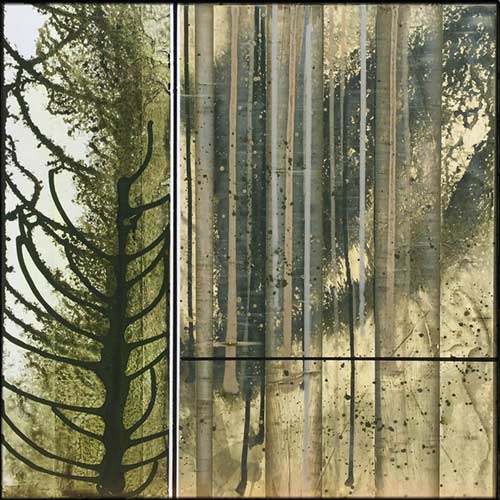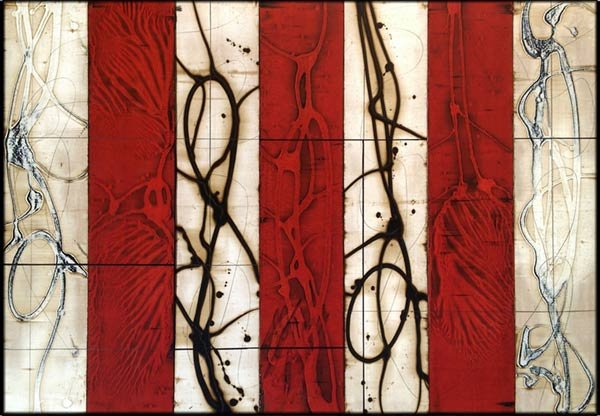Creating a successful painting often requires many layers of carefully applied paint. Michael Kessler takes that to its extreme.
“Are you right-brain or left-brain?” is a typical topic of conversation among friends and family, the answer signaling whether one is a creative individual or more analytical and objective. The two aren’t mutually exclusive in the art of Michael Kessler, whose paintings explore the continuum of gesture and geometry.
Working with extremely thin translucent acrylic paints, Kessler constructs his paintings using, in some cases, as many as 200 highly structured layers. The result is a tantalizing concord of organic energy and movement created by tendrils that branch and feather like fractals — and a highly intentional and structured process. Kessler likens the gestural freedom in his works to “a kind of painterly ‘tai chi’ — a visible expression of a line of energy — and imbues his structural motifs with a sense of play and buoyancy. Like the yin and yang, the organic and geometric elements in his paintings speak not of dichotomy, but of integration.”

Michael Kessler, “Forest (17),” acrylic on wood, 20 x 20 in. Ann Korologos Gallery
“Redhedge” is a representational example of Kessler’s ability to harmoniously blend the organic with the structured. The piece is divided equally into seven vertical sections, identified through tan and red coloring. Straight lines form a grid-like structure while flowing organic lines thrash around the entire work.
“Organic Evolution: Michael Kessler” opened on August 14 at Ann Korologos Gallery in Basalt, Colorado, and will hang through September 4.
To learn more, visit Ann Korologos Gallery.
This article was featured in Fine Art Today, a weekly e-newsletter from Fine Art Connoisseur magazine. To start receiving Fine Art Today for free, click here.








